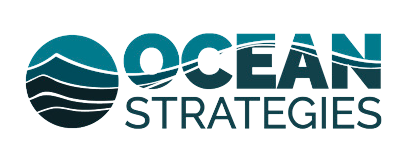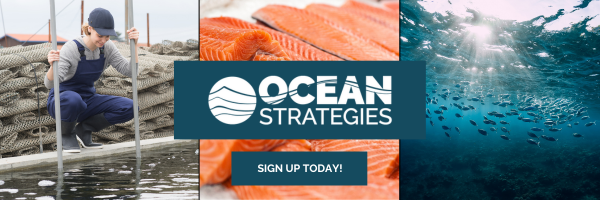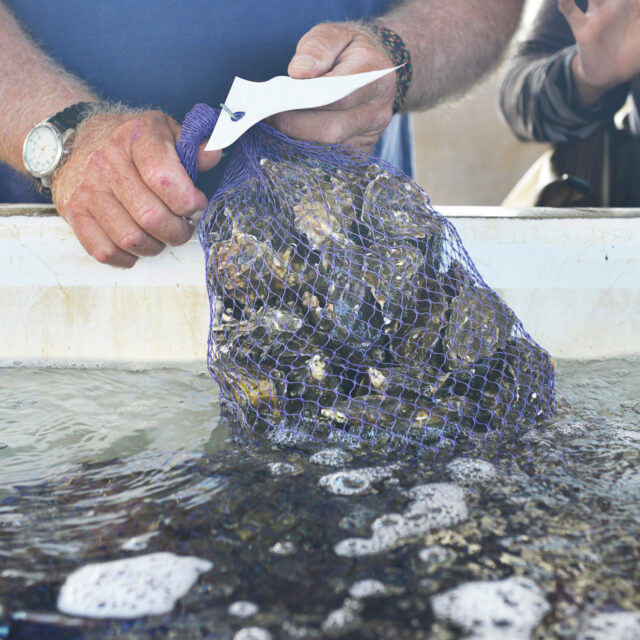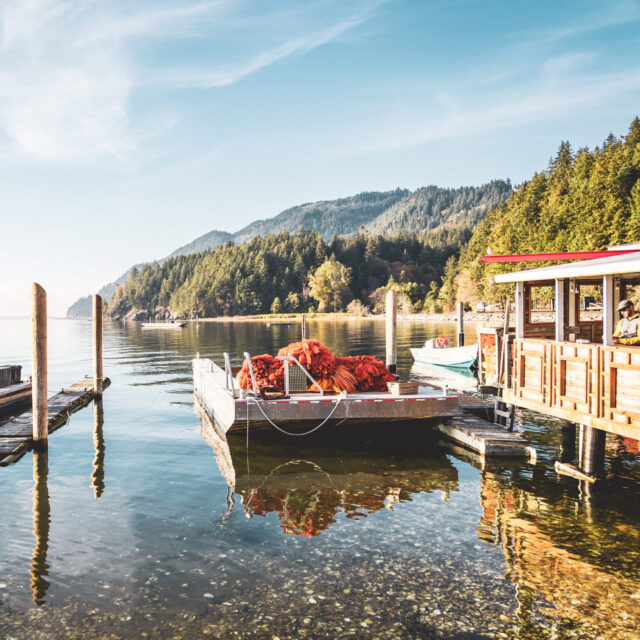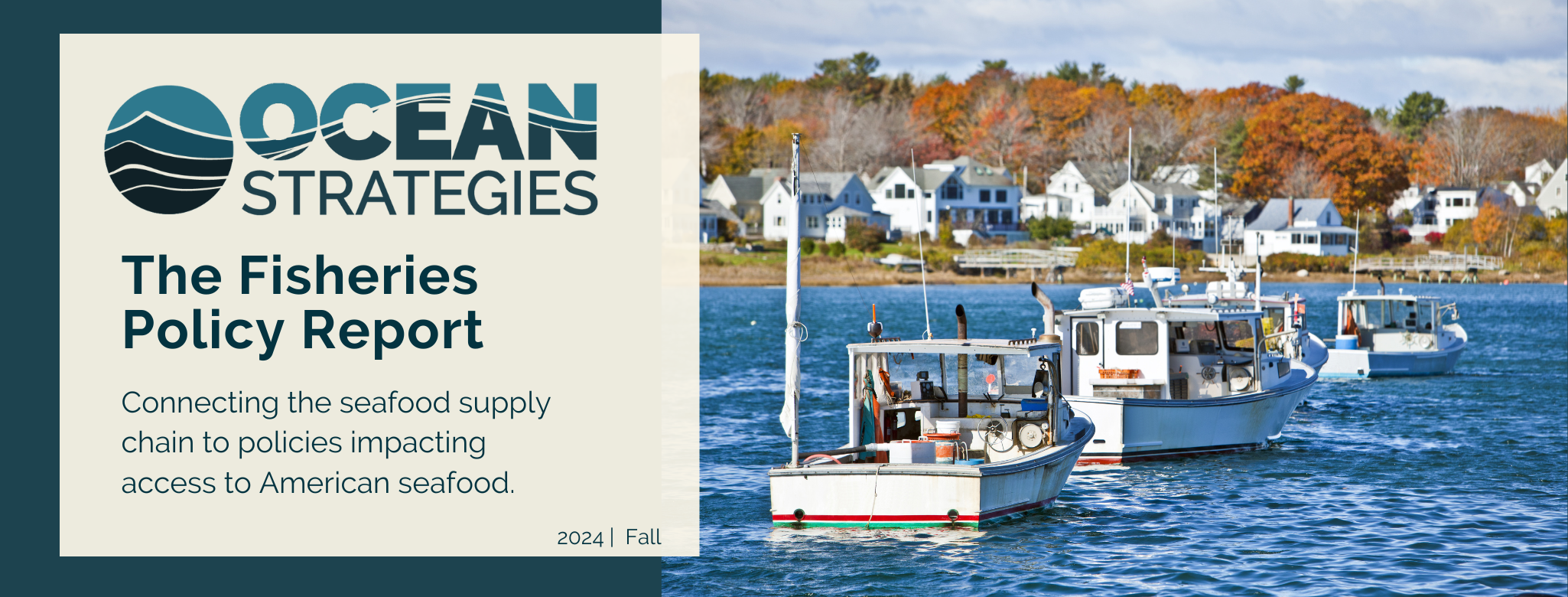
Ocean Strategies is a public affairs firm specializing in seafood, fisheries and marine resources.
This report provides policy and industry updates for those who rely on access to sustainable U.S. seafood. Sign up here.
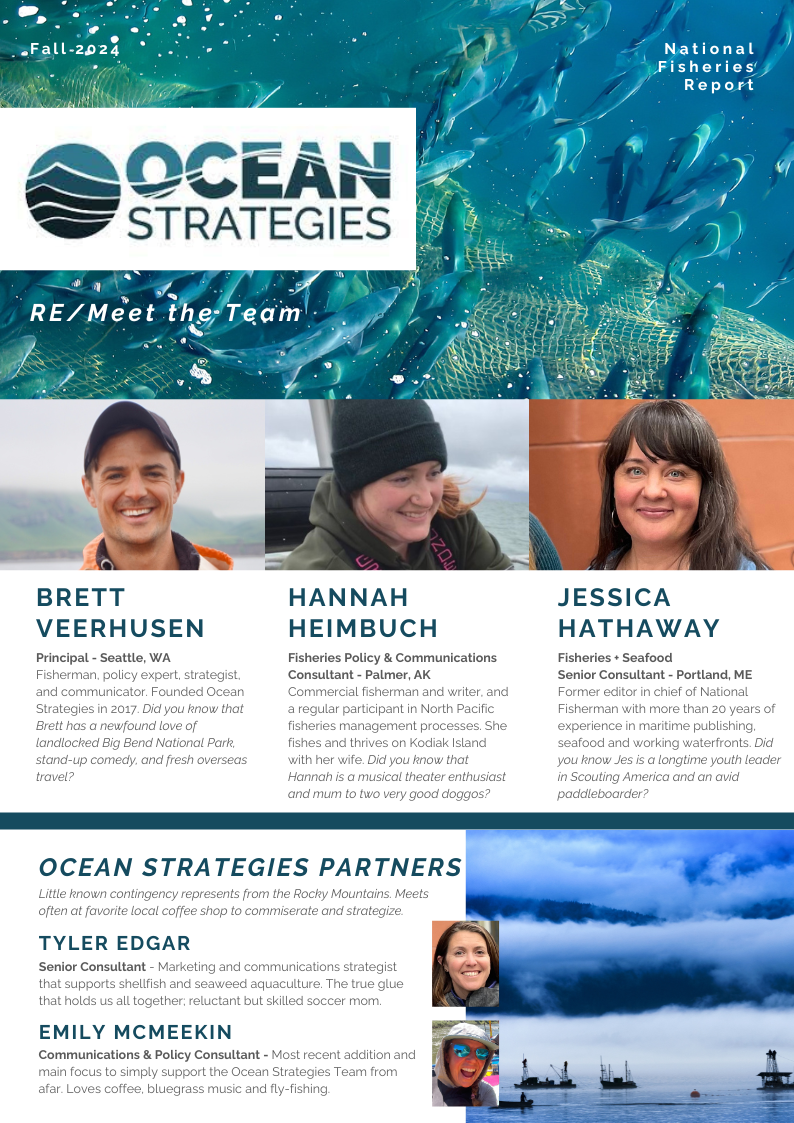
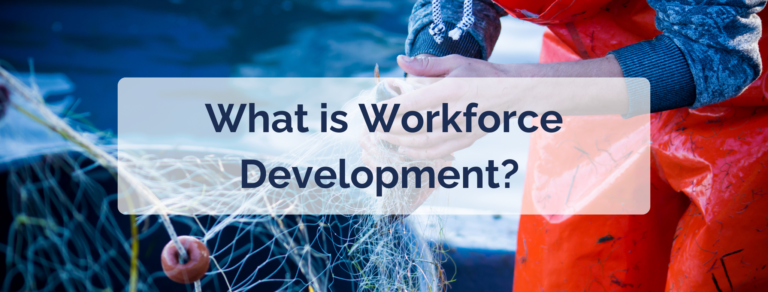
What is Workforce Development?
The term “workforce development” can conjure a wide range of images — promotion of skilled trades, industry-centered incentives, career training and other educational opportunities.
At Ocean Strategies, we are using this term – and the myriad ways fishing communities are interpreting it – to help envision the future we want and need for our industry and for our fishing-dependent communities.
We know that training the next generation for fisheries, aquaculture, and seafood processing is a key component of any future-focused and community-centered development opportunity, but the training is not just for future crew. It’s also for leaders, advocates, scientists, and many other career opportunities in thriving working waterfronts.
Fisheries advocates often draw comparisons between fishermen and farmers: They’re food producers who rely on specific resources, markets, policies and their communities to thrive. What the fishing industry is missing (that the farming sector has) is an expansive cultural connection to the work, the space it requires and the value of the harvest — not just to domestic food security but also to our health and wellness. First we must nurture the cultural connections to our working waterfronts in order to succeed in creating passion for the marine trades and ensuring future leadership for our fishing communities.
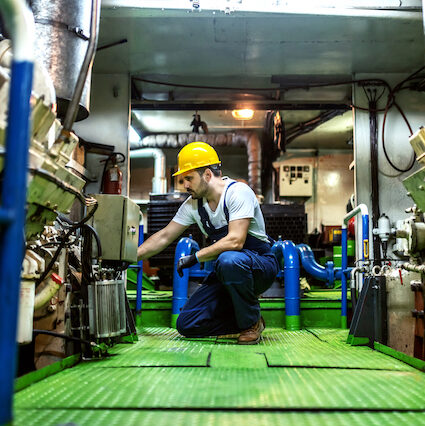
Sustainability in fisheries must reach beyond ensuring a healthy biomass or productive spawning grounds. It also depends on communities and people who know how to build and maintain boats, harvest fish, create and package new seafood products, and most importantly are able to access and shore up our working waterfronts as these communities face the challenges of climatic disruptions and gentrification.
How this translates to policy is multifaceted. If the health of a fishery and our domestic seafood supply depends on healthy and (yes) resilient working waterfront communities, then a single policy framework is not likely to encompass all the components necessary to backstop all of those needs.
That’s why fishermen and their trade organizations simultaneously advocate for the Young Fishermen’s Development Program (which will need advocates for increasing its funding in FY ’26), a seafood- and fisheries-inclusive Farm Bill, infrastructure investments (federal, state and local), and economic development — as well as their necessary engagement in all the many layers of regulatory processes and agencies that oversee management and fisheries access.
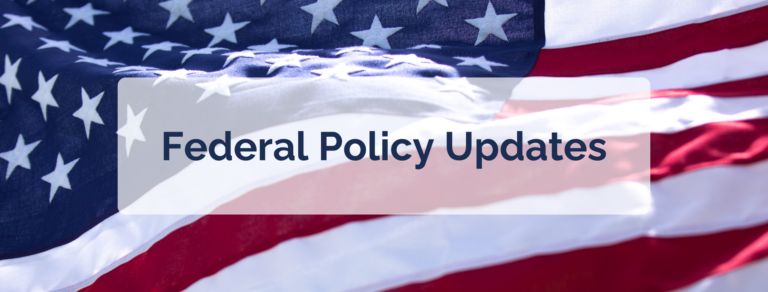
Federal Policy Updates
Making predictions about Congressional actions is about as reliable as presidential election predictions at this point. While we know the Farm Bill has some potential to move, it’s more likely to happen after the election in the lame-duck session. If that’s the case, then seafood inclusions will be a lift at best, despite long-term efforts to align the needs of our nation’s fishermen with those of our farmers. (Read our Farm Bill 2024 Special Report on Ocean Pulse.)
We’re all keeping an eye on the November election, polling and the lack of predictability in outcomes for the presidential race, as well as both the House and Senate. Leadership at all levels of federal government will have enormous opportunities to change the scope of federal policy as it relates to our fishing communities, working waterfronts and the fisheries themselves.
Just this week, we are tracking the disastrous effects of Hurricane Helene on Southeast and Gulf Coast ports. It’s not the first time this year we’ve witnessed our working waterfront communities brace for recovery from catastrophic storm damage. Meanwhile, NOAA’s operating budget consistently comes under intense scrutiny in the appropriations process and often ends up facing cuts to critical programs.
To compensate for the cuts, NOAA Fisheries may draw from the same fund that alternatively supports the Saltonstall-Kennedy grant program, which is designed to market domestic seafood and develop new products.
Given the pressures that domestic seafood faces in the global marketplace, this is a critical time to ensure that our promotion and marketing efforts are fully funded through a robust S-K grant program, which also means ensuring that NOAA is well funded through appropriations.
Passed in 1954, the Saltonstall-Kennedy Act established a fund to promote domestic seafood based on 30 percent of import duties on seafood and seafood products. In 2024, that 30 percent amounted to $376.5 million, of which $6 million remained for the S-K Grant Program (after the agency recovered some of its Congressional budget cuts and made cuts to other programs). That means the S-K Grant Program was allocated about 1.5 percent of the funds it was intended to run on. If the program were granted even 10 percent of its intended funds, that could provide upward of $40 million in promotion, marketing and development funds for domestic seafood producers throughout the supply chain.
Close-Up On Closures: Part III
Ocean Strategies Consultant Hannah Heimbuch delivers the third installment of a personal story amid Alaska’s fish processing challenges. Consider reading her first chapter and second chapter published in April and July of this year to get the full story.
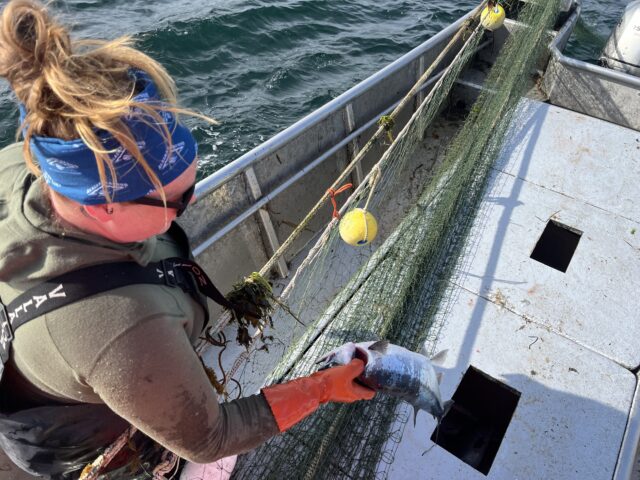
The leaves are turning here in Alaska, and sockeye salmon runs across the state have closed the loop on their spawning lifecycle. Eggs for the nextgeneration are tucked into graveled streambeds, snowfall is creeping down the mountains, and the morning frost has a little more bite to it with each passing day. As a salmon fisherman, getting to autumn is a little like lying down in the grass after running a marathon. I made it over the hills and valleys to the finish line, and though it feels like I could lie down and sleep for a decade, I know before long I need to get up and start preparing for the next race.
The run was rife with uncertainty this year, for us and many others across the state. After our long-time buyer dropped the Alitak setnet fleet from its fisherman roster, we lost the only established means for gearing up remote fishing camps, fueling boats, and selling catch. This has been a pattern across the state, as 3 of Alaska’s largest processors sold or consolidated major assets, and continue to strain under the pressure of market declines and stock fluctuations. The impact to communities – like King Cove, Akhiok, or Chignik – is not a simple or short-term problem.
So how did it go?
Sketchy start, but it all came together. While salmon runs statewide were inconsistent in both returning numbers and fish size, the fish ultimately pulled through for us in Alitak this year. The spring was a chaos of…
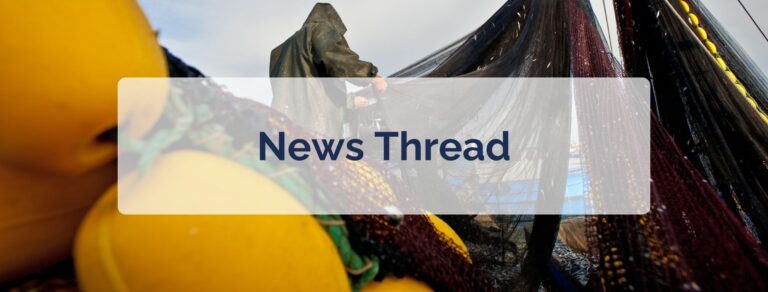
News Thread
- A new Wildlife Conservation Society study measures perceptions of fisheries management benefits before and after community engagement interventions and this insightful piece published by the Society for Conservation Biology indicates bright lines between community education and engagement to support for sustainable working waterfronts and commercial fishing communities near and far.
- A midsummer update from a commercial setnet site outside Kenai, Alaska where fishermen have been testing beach seines as an option to harvest target sockeye salmon without killing king salmon.
- Bristol Bay fishermen experiencing more “stagger than swagger” at the end of the season. For most (if not all) commercial fishing sectors, the harvest volume just isn’t there. “The combination of weaker runs and depressed ex-vessel prices in recent years may redefine the demographics of fishermen who can afford to stay in the Bay, and moreover, determine future entrants into the fishery.”
-
An interesting update from Ned Daly and Seafood2030 featuring commonalities of four leading seafood companies’ approaches to sustainability and climate change.
-
New Hampshire and Maine working waterfronts are rebuilding after winter storms, elevating dialogue and development around resilient coastal infrastructure and the people who depend on it.
-
Check out this op-ed from Lisa Damrosch of Pacific Coast Federation of Fishermen’s Associations, talking about why fishermen and farmers need partnership for America’s future food security. This topic remains top of mind for many fisheries focused organizations.
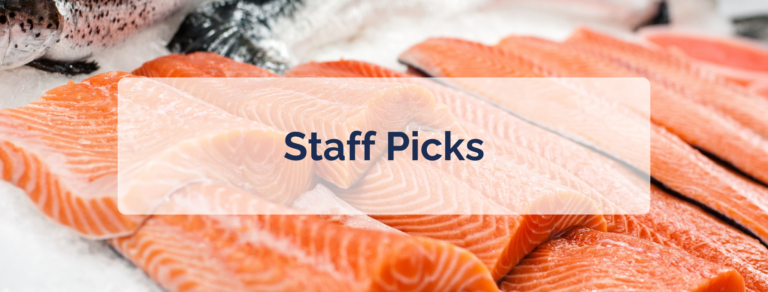
What We’re Taking In
Listening
In Hot Water
Don’t miss SAGE and Seaworthy Experience’s latest collaboration In Hot Water, a climate and seafood podcast series. Listen in on three generations while they hit the road to explore key seafood producing regions across the U.S. and hear from people working at the intersections of fisheries, aquaculture, seafood, and conservation while grappling with the effects of the global climate crisis. Season one is set in Texas and the Gulf of Mexico and revolves around why we are in hot water and what coastal communities are doing about it. Thankfully SAGE and Seaworthy Experience do not hold back while they take on shrimp, oil, oysters and social issues (oof!).
Chevron Doctrine
Maine Coast Fishermen’s Association recently dropped a podcast about the Chevron Doctrine discussing what the recent overturning of that landmark case means for fisheries management.
Watching
Quick drop from the Maine Development Foundation
Hear more from some of the incredible women in Maine who are transforming the seafood sector on the water and beyond — captured in a short but inspiring video created by the Maine Development Foundation.
Reading
A Book from the Shelf
If you have yet to read All the Fish in the Sea by Carmel Finley, consider picking up this engaging journey through the development of modern U.S. fisheries management.
Cooking
Drunken Mussels
While we’re not exactly condoning the need for anyone to get particularly boozy this month or next (post-fishing/pre-election/name-the-world-issue-worry-here season) – we understand why one might choose to. Regardless, a good time for drunken mussels hot off the allrecipes.com deck. They just might just hit the spot whether you’re using Blue Mussels in the East or a California mussel hailing from the West. (P.S. Allrecipes.com might not be fancy but let’s be realistic, neither are we!)
Events
- October 6, 11-3:30pm PST – Blue Innovation 2024, Santa Cruz, Calif. Features exhibits from companies, artists, small businesses, non-profits, and researchers who are tackling the water and ocean challenges created by climate change.
- November 20-22 – Pacific Marine Expo, Seattle
- December 3-5, 2-5pm EST – Climate Ready Workforce Symposium, virtual
- February 4-6, 2025 – National Working Waterfront Network Conference, San Diego, Calif.
Here is a list of links to our most recent policy reports. You are always able to find them on our Ocean Pulse Blog. If you’d like to receive them directly, just sign up here.
